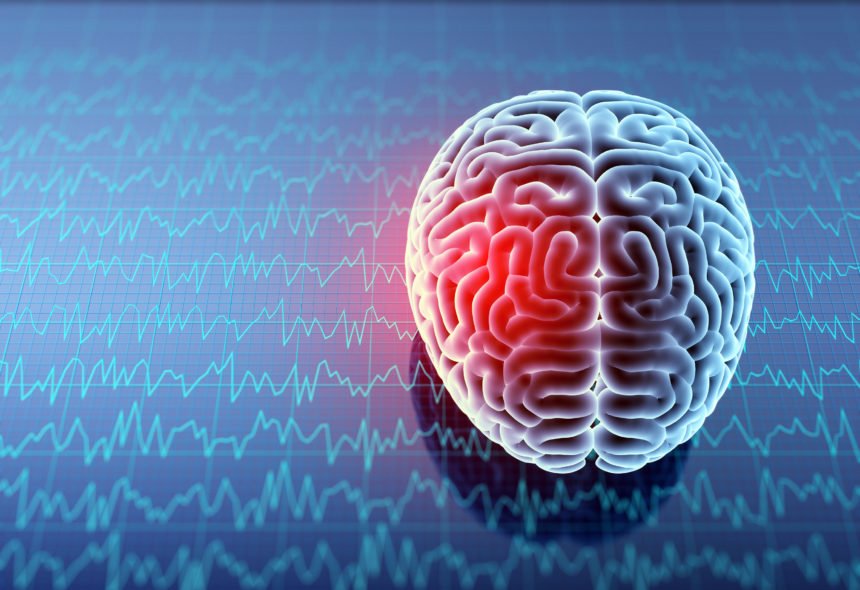Your Brain on Stress


Did you know that excessive worry about catching COVID-19 can actually increase the risk of catching COVID-19? To gain an awareness of the connection between prolonged periods of emotional stress and increased vulnerability to physical illness, it’s important to understand the body’s exquisite stress response system. The human brain is shaped like a walnut, about the size of a coconut; it takes up about 2% of your body’s volume, uses about 25% of your caloric intake and 50% of oxygen consumed. Its number one priority is to sustain life.
When the brain registers a threat, changes within the body rapidly occur. The hypothalamus, known as the brains first responder, instantly alerts the pituitary gland of imminent danger.
The pituitary then signals the adrenal glands to mobilize for battle and defend at all cost. These two little adrenal glands, sitting atop the kidneys will start pumping out significant amounts of survival hormones. Specifically, cortisol and adrenaline known as the “adrenal axis”.
The body’s stress response is designed to be immediate, explosive, acute (short-term), and with one singular purpose; enhance the ability to survive a life or death situation.
Survival hormones are great should you find yourself in a forest suddenly encountering a grizzly bear. If one makes it out, cortisol and adrenaline are the two hormones you can thank for your survival. However, there is a dark side to this stress response. If the adrenal axis response is turned on too often or stays on too long, health, both physical and mental health can become impaired.
The adrenal axis will activate this same stress response even if the grizzly is not real but merely imaged. Being in a state of chronic worry and stressful hypervigilance exposes the body to hormones at excessive and harmful levels which can turn psychological risk factor into a physical one. When the source of stress is chronic, the body never receives the message to return to normal functioning.
Although we are powerless to change the reality of this current pandemic, we do have the choice to respond in ways that will protect our brain and promote wellness. In his seminal book “Man’s Search for Meaning,” Victor Frankl wrote these wise words; “The last of human freedoms is the ability to choose one's attitude in a given set of circumstances.” Science has proven that our response to what we perceive is currently happening has a greater impact on our health than what is actually happening; what our mind dwells on is what our body will act upon.
Here are some specific ways to optimize energy and maintain your well-being:
- The term “social distancing” is not necessarily being interpreted correctly. It is, of course, essential that we practice physical distancing to limit the spread of this virus but social connection is also critical. We need each other more than ever during times of uncertainty. Numerous studies show that meaningful emotional connections keep us healthy; when we experience personal connection with others, our pituitary gland releases oxytocin.
This neuro chemical is known as the calming, bonding hormone and it works to correct damage caused by excessive levels of cortisol. However, sending emails and text messages will not result in the production of much oxytocin. Meaningful emotional connection requires observing another person’s facial expressions and experiencing sustained eye contact. Benefits from social engagement can be accomplished by using programs such as FaceTime, Zoom or Skype. Human connection is the “emotional oxygen” that is essential to sustain physical health and emotional well-being.
When President Franklin Roosevelt was inaugurated in 1933, the U.S. was experiencing the worst depression in its history. A quarter of the workforce was unemployed. It was at this time of national uncertainty and distress that Roosevelt claimed “We have nothing to fear but fear itself.” This reality remains true today. It’s comforting to remember that no problem lasts forever. No matter how permanently fixed in the center of our lives it may appear at any particular this moment, it will eventually pass.
Interestingly, these present circumstances may provide unique opportunities for resilience. People and tea bags have one thing in common; it takes being placed in hot water to determine how strong we really are. Difficult situations often bring out qualities in us that otherwise might not have risen to the surface, courage, faith, and our need for one another. All of our experiences, both good and bad, can help us to grow.
The truth is that our finest moments are most likely to happen when we are feeling deeply distressed. For it is only in such moments, motivated by our fear and discomfort, that we are likely to step away from old patterns and create new ways to move forward.
By: Caroline D. Smith, MA, LPC
Director of Pine Grove Intensive Workshops



